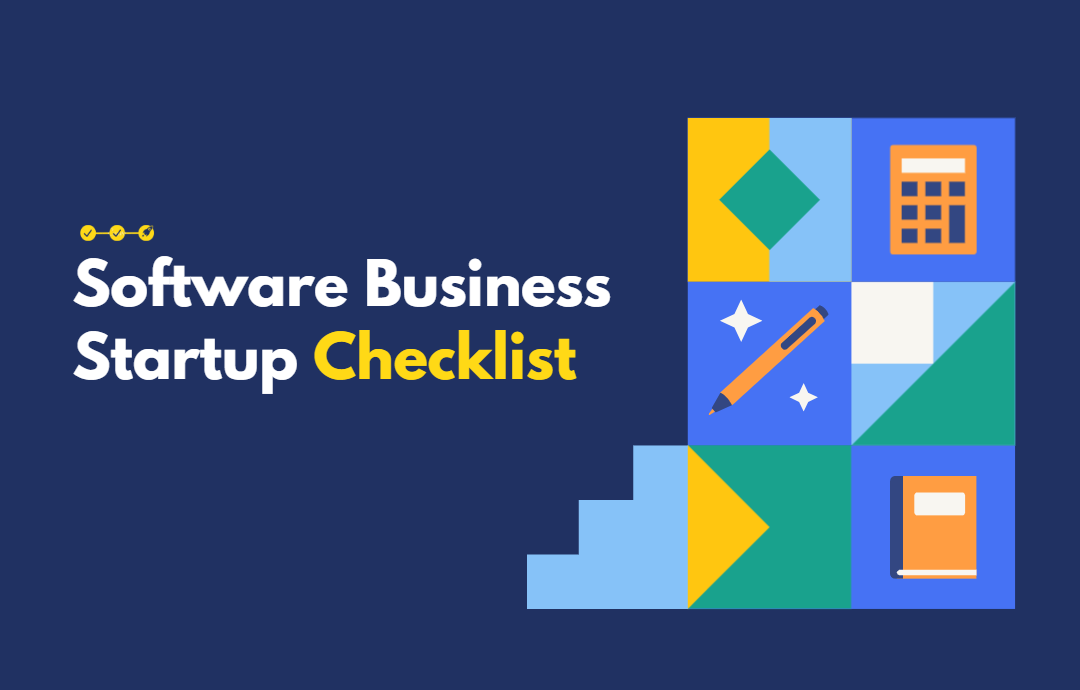
The actual process for launching a software business can vary from one entrepreneur to the next. There are a few basic steps that every aspiring software mogul should consider. Here is a general checklist for establishing a firm foundation for your tech company.
12 Steps for Establishing a Successful Software Company
1) Validate Your Idea
You may think you have an amazing idea for a new software solution, and you're probably right! But before you build a business around it, it may be wise to do some market research to validate the idea and confirm that you're addressing a real pain point that other consumers will recognize.
Market research can help you identify the target audience you're seeking, articulate the problem you're trying to address, and ensure that you're not simply repeating extant solutions.
2) Define Your Value Proposition
Related to the market research step, take the time to consider what sets your software solutions apart from the competition.
But, you need an elevator pitch outlining what you do and why it matters, along with a clear articulation of your business distinctive: Why should investors and customers trust you over others in the industry? This might be that your product is more affordable, more efficient, more secure, or that your business model is more sustainable. These are a few examples of the value propositions you might develop.
3) Create a Business Plan
A business plan is not an official legal document, so there's not necessarily one rigid way of making one. With that said, having a business plan can help you attract investors while providing direction for your operational team.
A business plan should clarify such details as:
- Your short-term and long-term goals
- Your target market
- Your revenue model
- Your strategy for marketing and lead generation
- Financial projections
- Preliminary budgets and resource allocation
4) Make a Prototype
Most software companies begin by creating a minimal viable product (MVP), which is a bare-bones version of the product they intend to offer.
Share this program with some alpha and beta users who can provide feedback and, ultimately, who can confirm that you're moving in the right direction with your software offering.
5) Choose a Legal Structure
The legal structure you pick for your software business can affect your legal liability, how you report to the IRS, the regulatory burdens you work under, and more.
There are a few options, including Partnership, Sole Proprietorship, and Corporation. For most software businesses, the best option is the Limited Liability Company, or LLC. LLCs offer robust legal liability protections (a must-have in such a litigious field) but much more flexibility than Corporations enjoy.
If you have any questions about the legal structure, consider speaking with an attorney or a business coach.
6) Register Your Business
To legally register your business, there are a few short steps to complete:
Ensure that you have a Registered Agent to represent your software business. This is a legal necessity for LLCs.
Complete your Articles of Organization and file them with your Secretary of State.
Pay the filing fee in your state. (Example: How much does it cost to set up a Texas LLC?
Ensure your business name is not already claimed by another LLC in your state.
7) Create an Operating Agreement
Like your business plan, the Operating Agreement is not legally mandatory. However, having one in place is prudent, as it can help you avoid legal conflicts down the road.
What is an Operating Agreement, exactly? It is a charter in which you and your business partners agree on how you will manage the company. Your Operating Agreement might cover topics like:
How you and your partners share managerial responsibilities.
How you and your partners will allocate profits.
How will you handle onboarding a new partner?
How will you process a partner who decides to leave the business?
Having your Operating Agreement ready-made as a fillable PDF or shared file for all partners is key.
8) Consider Legal Issues
Registering your software company as an LLC will provide you with some important legal liability protections.
Even so, the nature of software development means that you may wish to discuss several specific legal concerns with an attorney.
Consider two in particular. First, ensure you have the patents, trademarks, and copyrights required to protect your intellectual property. And second, be sure that you know how to protect your business from any infringements of consumer privacy laws. Knowledge of GDPR and similar regulations is essential for any software company.
9) Claim an Employer Identification Number (EIN)
Your EIN is similar to a Social Security Number, but it denotes a specific business entity instead of identifying an individual.
You won't necessarily need an EIN from day one, but you will need it before you file business taxes or before you process your first payroll.
The good news is that getting an EIN is pretty easy; you just need to apply with the IRS. If you're based in the United States, you should be able to secure an EIN free of charge.
10) Set Up Your Business Banking
You'll need to have some sort of banking apparatus in place before you can pay vendors or receive payments from your customers.
For LLCs, it's crucial to have a business bank account distinct from any personal checking or savings account. You may need a business bank statement, especially if you need to apply for a loan . Ensure you avoid paying business liabilities with personal assets or vice versa.
11) Build Your Team
Sooner or later, you'll need to assemble a crack squad to help turn your business dreams into financial realities. Developers, designers, and marketers may all be required to help you achieve your business goals.
Ensure you create job descriptions clearly identifying roles and responsibilities for everyone on your team. Start delegating early on to avoid the burnout that comes when entrepreneurs try to carry the whole world on their shoulders.
12) Launch and Monitor
The launch of your software company is a momentous day, yet it's hardly the end of this process.
On the contrary, building your dream company requires a sustained and focused effort. Ensure that you have protocols and systems to monitor market response and incorporate user feedback, ensuring that your products improve over time.
Bonus Tip: Implementing IT Project Management Methodologies

Project management methodologies provide a framework that helps in systematically approaching the complex tasks and challenges that each project presents. They facilitate communication between the project team and stakeholders, help in assessing progress and effectiveness of work, and provide tools for managing risk and change.
With the help of IT project management methodologies, project managers can better anticipate potential problems, plan resources, and achieve project goals within established time and budget frames.
Generally speaking, project management methodologies and selecting the right one support proper project management, especially for a startup software business.
Manage Documents In Your Company Even More Effectively with PDFs

On the other hand, document management focuses on working with the documents themselves, files, and records in various formats, including text documents, spreadsheets, presentations, images, and PDFs.
Document management aims to capture, store, organize, retrieve, and effectively manage documents throughout their lifecycle. It also includes version control, access control, workflow and document circulation, and other tasks.
A strong document management strategy ensures a successful document management plan. Make sure your document management strategy includes an outline of:
- How will documents be collected, prepared, examined, stored, retrieved, and even deleted from your company's document management system?
- Criteria that must be achieved to complete a given stage.
- Plan whether the company will use the system across divisions or whether each division will need a specific file system.
- The process of destroying or archiving documents when they are no longer needed.
Choosing a document management tool or methodology takes work. Each file format is a unique, unrepeatable undertaking that requires special treatment. In addition, the method should meet the needs of the team that will be responsible for its implementation. Unfortunately, a black-and-white approach that recognizes the superiority of one method will not work here. Each of them, in addition to its advantages, has its drawbacks, which may be revealed in your project.
PDF document management can be performed using a dedicated program like SwifDoo PDF. It significantly improves the company's operation, increases work comfort, increases efficiency, and contributes to a better flow of PDF document circulation in the organization.
Establish Success in the Software Space
The tips presented in the post concern critical issues related to launching software business practices and project and document management methodologies. A closer familiarization with the topics discussed allows for gaining valuable knowledge applicable in practice and can help make important decisions.
With these steps, you'll be ready to build a sound and sturdy foundation for lasting success in the software industry.









